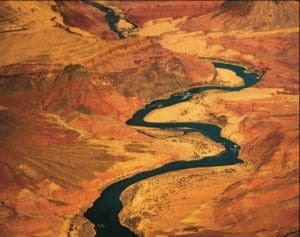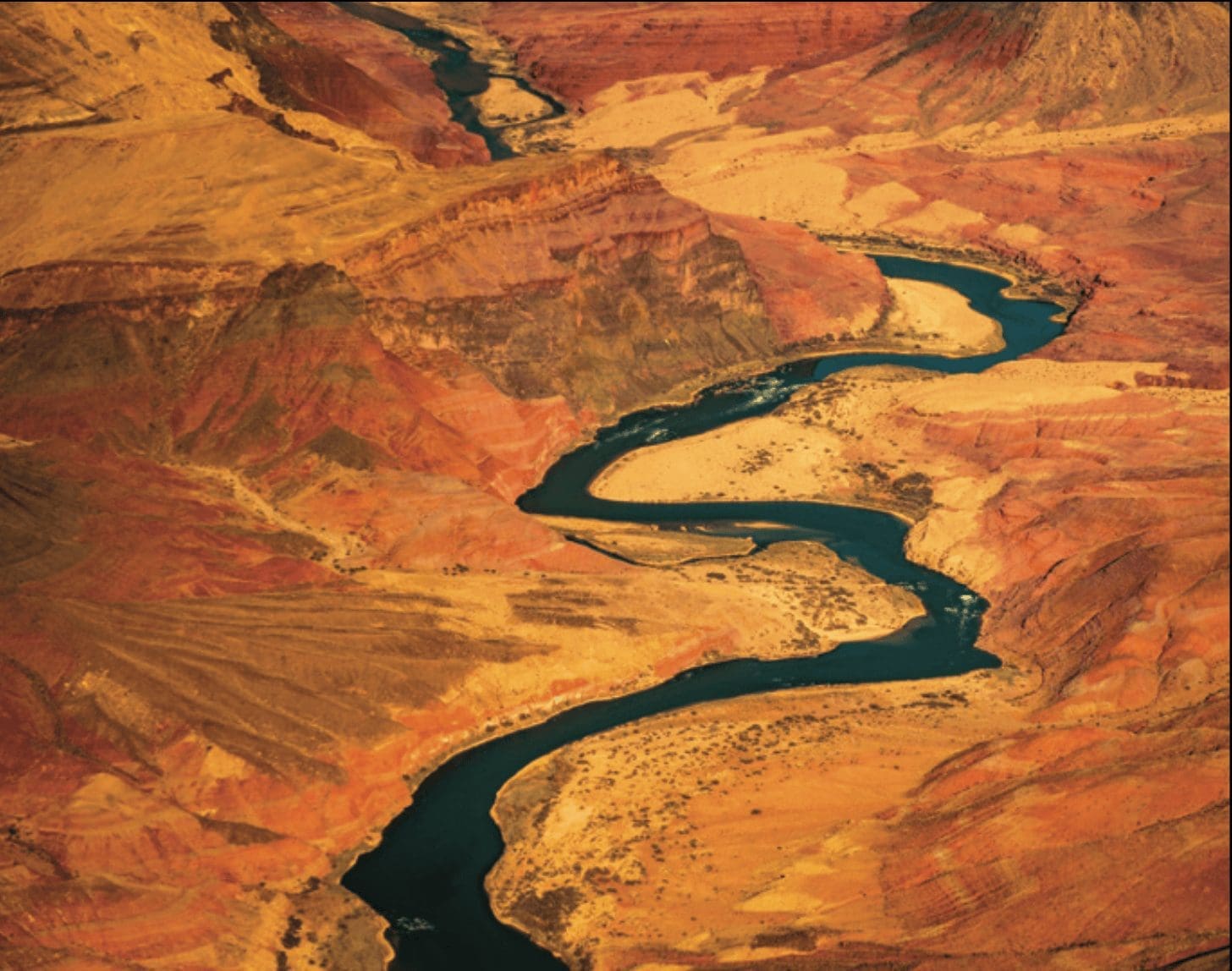Maybe Mark Twain Wasn’t Right After All
By Burt Rutherford Contributing Editor
 IF THERE’S A QUOTE that sums the history of water use in the cattle country, it’s the oft-used Mark Twain observation about whiskey and water –“Whiskey is for drinking; water is for fighting over.”
IF THERE’S A QUOTE that sums the history of water use in the cattle country, it’s the oft-used Mark Twain observation about whiskey and water –“Whiskey is for drinking; water is for fighting over.”
However, as the West faces its worst drought in 2,000 years, agriculture in the Colorado River basin may have to pound its legal swords into the verbal equivalent of plowshares if it is to continue to survive.
Indeed, re-plowing the battleground over who gets the water and how much they get may well define if not rewrite the future of the West, says Andy Mueller, general manager of the Colorado River District, a 15-county organization based in Glenwood Springs, Colo. Established 84 years ago by the region’s water users, the district advocates for water users near the headwaters of the Colorado River.
The Colorado River Basin may well be the poster child for what the future holds. It’s a good place to start as CALF News looks at the future of water in a vast swath of the United States. That’s because how much it does or doesn’t snow in Colorado’s High Country has and will continue to determine the amount of water that about 4 million acres of ag land and 40 million people need to live on as one of the main arteries in the lifeblood of the West flows through a dry and thirsty land
LET’S START WITH SOME BACKGROUND
Looking at historical averages, the Colorado River supplied all the water that people thought would ever be needed when the Colorado River Compact of 1922 became reality. The agreement apportioned the right to exclusive beneficial consumptive use of 7.5 million acre-feet of water from the Colorado River system in perpetuity each to the Upper Basin and the Lower Basin.
At the time the Compact came to be, the river was flowing at around 16 million acre-feet. But that level was destined to change. The 100- year average flow into Lake Powell is 15.5 million acre-feet and the average for the last 20 years has been about 12.6 million acre-feet, Mueller says.
Lake Powell is the focal point for looking at the health of the Colorado River basins. “Storing water in Lake Powell is critical, because 90 percent of the water
in the Colorado River comes from above Lake Powell. Once it’s stored in Lake Powell, it can be utilized in the Lower Basin and hopefully protect our ability to use water in the future.”
But as most everyone knows, Lake Powell and Lake Mead are at critically low levels. In response, the federal government and the seven basin states agreed earlier this year to reduce the outflow from Lake Powell to 7 million acre-feet.
However, based on Colorado’s snowpack, the projected flow into Lake Powell will be about 6.5 million acre-feet.“We’re looking at close to 50 percent of the average flow into Lake Powell,” Mueller says. “Unfortunately, we should expect that reduced flow to remain at or close to the same levels, on average.”
If the trend and the research are true, which it likely is, it sets the stage for a water war of the ages.
But it doesn’t have to be.
CAN’T WE ALL GET ALONG?
In Mueller’s mind, it’s not a case of can we get along, it’s a situation where agriculture has no choice but to get along.
Here’s why. While the seven states that comprise the Colorado River Basin – Wyoming, Colorado, Utah, Nevada, New Mexico, Arizona and California – likely have different ways of apportioning water, let’s use Colorado as an example.“Despite being a prior appropriation state, the constitution of Colorado says that in the event of water shortages, water use shall be appropriated in the following priorities,” Mueller says. “First is municipal water. So that takes priority over agriculture.”
So, in times of shortage, it will be argued by city dwellers that cities can water green spaces and people can water their lawns before agriculture can irrigate hay fields and crops. And that won’t change.
“Even for those of us who are advocates for agricultural water use, the idea of cutting water off to cities and people who depend on water in their taps or water in their fire hydrants is politically untenable for any state engineer, any governor, any judge. So there’s that municipal preference.”
What’s more, Mueller says municipal planners and municipal water system operators look at irrigated agriculture in the Colorado River Basin as a reservoir for future growth.“And they have approached it various ways; many of them through buy and dry,” where a developer buys water rights from a farmer or rancher.
Mueller uses Southern California as an example.“The biggest [municipal water provider] is the Metropolitan Water District of Southern California. They have utilized the purchase or fallowing of agricultural land in the Palo Verde Irrigation District. And they are looking at and have made some deals with the Imperial Irrigation District, as has San Diego, to either permanently or temporarily fallow ag land to provide water for urban use.”
AG AT THE TABLE
So it’s absolutely critical in Mueller’s mind that agriculture has a strong voice at the negotiation table. Beyond that, what can be done? One is for ag producers to switch to less water-intensive forage, hay and pasture plants. And to make some hard, voluntary choices when irrigation water is short.
“I’m a firm believer that the ag industry and ag producers are at a critical point. The river’s at a critical point. We need ag producer voices loud and at the table.”
-Andy Mueller
Every ag operation has land that is more productive than others. Because a producer is interested in the success of the operation, it’s likely that water will be used on the more productive land, while less productive land doesn’t get irrigated.
If that’s the way producers work on an individual basis, do you scale that up and develop a CRP-type of program where producers are paid to take marginal land out of irrigation? Or do you do nothing and let ag producers with senior water rights get the water while producers with junior rights get nothing and municipalities get water from ag producers with senior rights?
In Mueller’s mind, doing nothing isn’t an option.
“I think the question for agriculture is, does ag come to the table, stay at the table and protect its interests by understanding we run risk by not doing anything?” he asks. Further,“Is it appropriate to have a program developed within the Colorado River Basin, both the Upper Basin and the Lower Basin, where we’re focusing on trying to keep the most productive ground in irrigation production?”
Without those kind of options coming from ag producers, Mueller fears the war will rage on, where it turns into an us-vs.-them situation and municipalities continue buying and drying.
“I’m a firm believer that the ag industry and ag producers are at a critical point. The river’s at a critical point. We need ag producer voices loud and at the table.” If ag producers and their associations can do that, Mueller believes the conversation can productively find solutions that will help.
“And if we can’t do that, I’m afraid that the paid consultants for the urban water-use lobby will find solutions that will result in the downfall of ag in our state and in the basin as a whole.”







